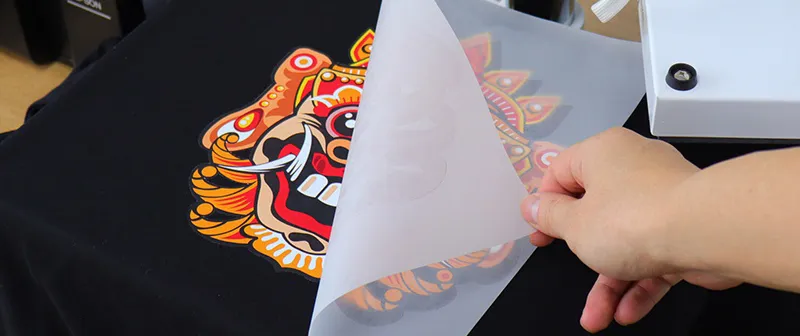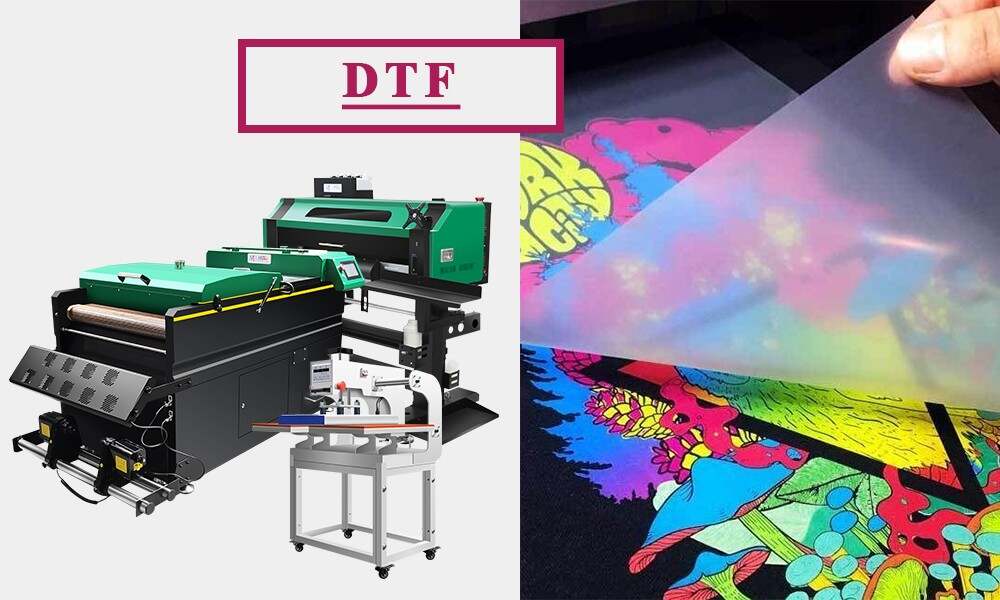The Ultimate DTF Printing Overview: Methods, Products, and Applications
The Ultimate DTF Printing Overview: Methods, Products, and Applications
Blog Article
Ultimate Guide to DTF Printing Strategies for Spectacular Fabric Styles
Starting the journey of understanding DTF printing techniques can open a world of possibilities for producing visually fascinating textile layouts. As the textile market remains to evolve, remaining in advance of the contour with ingenious printing methods is crucial. In this guide, we will discover the detailed information of DTF printing, from realizing the essential essentials to unraveling advanced shade methods that can raise your layouts to new elevations. Stay tuned as we look into the nuances of selecting the best materials, perfecting the printing process, and conquering typical difficulties to achieve magnificent outcomes.
Comprehending DTF Printing Basics
DTF printing, a procedure that involves transferring designs from a special movie to fabrics making use of warmth and pressure, develops the foundation of textile printing methods. The very first action in DTF printing includes developing or picking a style that will be printed onto the textile.
The last outcome is a sensational, resilient textile design that is washable, adaptable, and immune to fading. Generally, recognizing the essentials of DTF printing is important for mastering this modern textile printing technique.
Choosing the Right Fabric Products
Having actually developed the fundamental concepts of DTF printing methods for textile layouts, the following essential factor to consider depends on picking the appropriate textile materials to enhance this cutting-edge process properly. The success of a DTF print mostly depends on the compatibility between the chosen fabric and the printing technique. When selecting fabric materials for DTF printing, it is important to consider the textile's structure, weave, and structure. Fabrics that function well with DTF printing consist of polyester blends, spandex, nylon, and various other artificial materials. These materials typically have a smooth surface area that permits vibrant and in-depth prints. Additionally, the stretchability of these products can accommodate the warmth transfer process associated with DTF printing without misshaping the layout. It is recommended to prevent all-natural fibers such as cotton or silk, as they might not generate the same degree of print clarity and toughness. By picking the right textile materials, designers can make the most of the possibility of DTF printing to create spectacular and durable fabric layouts.

Grasping the Printing Process
To succeed in DTF printing strategies for textile layouts, grasping the printing process is crucial for attaining high-quality and consistent results. The printing procedure in DTF involves numerous crucial actions that require accuracy and focus to information. Firstly, preparing the artwork for printing is essential. This consists of making certain the style is correctly sized and positioned for the fabric. Next off, the design is published onto a special DTF film using a compatible printer with the best setups to accomplish ideal shade vibrancy and clearness (DTF Printing). When the style is published, it is then moved onto the textile using a warm press machine. The temperature level, stress, and period of heat application should be thoroughly managed to make sure correct bond of the design to the textile. Additionally, mastering the peeling off process after warmth pushing is vital to avoid any damages to the layout or fabric. By refining each of these steps in the printing process, developers can regularly produce spectacular and long lasting textile styles with DTF printing strategies.
Enhancing Designs With Color Techniques

In addition, try out shade slopes can bring a feeling of activity and fluidity to the style. By mixing colors seamlessly, a slope result can be attained, adding a dynamic and modern-day touch to the fabric design. In addition, utilizing shade blocking methods can produce strong and striking visuals by comparing various strong colors in unique areas of the layout.
Additionally, incorporating metal or neon shades can provide a distinctive and unique component to the textile layout, making it attract attention and emanate a sense of vibrancy. When tactically used, these shade techniques can raise the overall aesthetic charm of fabric layouts, making them more exciting and memorable.
Troubleshooting Common DTF Printing Issues
After discovering various shade techniques to improve textile styles, it is necessary to deal with common DTF printing concerns that might arise throughout the manufacturing procedure. In addition, problems with image clarity and sharpness can occur due to low-resolution pictures or inappropriate printing methods. By being aware of these usual problems and carrying out the necessary troubleshooting steps, you can improve the overall quality of your DTF printed fabric designs.
Verdict
Finally, mastering DTF printing strategies is vital for creating magnificent textile layouts. By comprehending the basics of DTF printing, picking the ideal products, and improving designs with shade techniques, one can achieve remarkable outcomes. It is vital to troubleshoot usual concerns that may develop throughout the printing procedure to make sure an effective end result. With method and interest to detail, one can create stunning and distinct textile layouts making use of DTF printing like it methods.
DTF printing, a process that entails transferring designs from an unique movie to fabrics utilizing warmth and pressure, develops the structure of textile printing methods.Having established the fundamental concepts of DTF printing techniques for textile designs, the next critical consideration lies in picking the ideal fabric products to match this innovative process properly. By selecting the best fabric materials, developers can optimize the potential of DTF printing to develop spectacular and long-lasting textile layouts.
To stand out in DTF printing strategies for textile styles, understanding a fantastic read the printing process is crucial for achieving regular and premium outcomes. DTF Printing. By developing each of these actions in the printing procedure, developers can continually create durable and sensational textile layouts with DTF printing techniques
Report this page